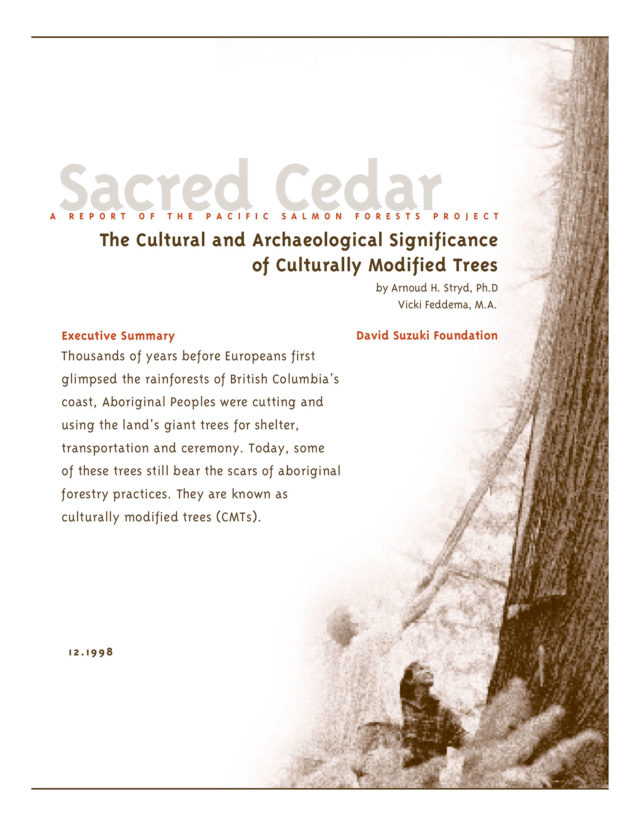EXECUTIVE SUMMARY — Sacred Cedar: The Cultural and Archaeological Significance of Culturally Modified Trees: A Report of the Pacific Forests Salmon Project
Published by:
David Suzuki Foundation
Authored by:
Arnoud H. Stryd,
Vicki Feddema
Biodiversity, Environmental rights British Columbia, forests, Indigenous Peoples, community and culture, conservation, land use, Pacific Salmon Forests Project
Thousands of years before Europeans first glimpsed the rainforests of British Columbia’s coast, Aboriginal Peoples were cutting and using the land’s giant trees for shelter, transportation and ceremony. Today, some of these trees still bear the scars of aboriginal forestry practices. They are known as culturally modified trees (CMTs).
Found largely in old growth cedar stands, CMTs are of great cultural and spiritual importance and provide anthropologists and archaeologists with valuable insight on traditional forest use. At one time these trees could be found all along the coast. Unfortunately, logging and human encroachment have destroyed most sites, making those that remain even more valuable.
This is the executive summary to Arnoud Stryd and Vicki Feddema’s report that points out that protecting these treasures has and will change modern forestry practices.
